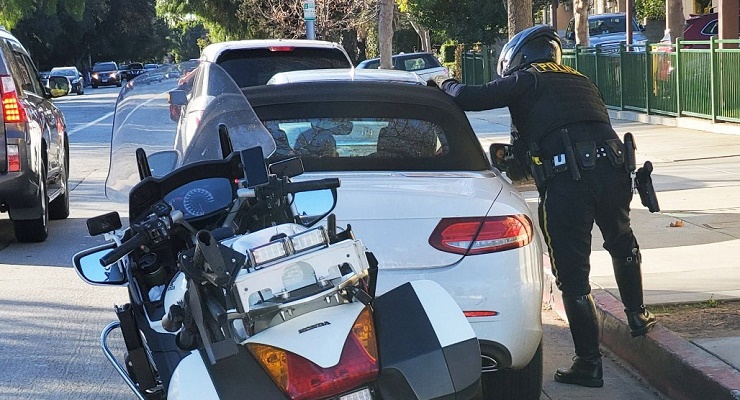
Want to live safely with the bears, coyotes, deer, snakes and other animals that share your neighborhoods and back yards? Stay out of their way.
That was the consensus last night at Longfellow Elementary School in Pasadena where more than a dozen city, county and state experts addressed the issue of “Living with Urban Wildlife” before nearly a hundred local residents.
California Department of Fish and Wildlife officials, along with officials from the Pasadena Humane Society, Pasadena Department of Public Works and Pasadena Police, implored the audience members to find ways to “work together to live safely” with local wildlife, especially in the wake of a recent bear attack on a Sierra Madre resident who may have stumbled across a bear mating session, and is still hospitalized following the attack.
“That bear is still out there, too,” warned Lt. Martin Wall of the State of California Department of Fish and Game.
According to Fish and Game literature, black bear populations are currently at their highest levels in recorded history. There are also 6,000 to 7,000 mountain lions in the state.
“I live in this neighborhood, and I see these wild animals all the time,” said Councilmember Margaret McAustin, who reported once seeing a bear in a tree in her neighborhood. “We need to be mindful of their presence, and we need to be careful.”
“You need to be minimize any attractions for them,” emphasized Rebecca Barboza, environmental scientist for the State of California Department of Fish and Wildlife. “If you encounter them, scare them away,” she said, adding that in most cases, animals will flee rather than attack.
“But, she also added, “the urban interface is a very attractive place for animals,” “There is food and water and shelter there. It’s a very rich habitat.” Barboza stressed the importance of eliminating any reason for animals to visit your home, such as trash and food left out.
Much of the evening’s emphasis seemed to be the presence of bears, mountain lions and coyotes, or “The ones with teeth and claws,” as one resident described them.
All of the experts agreed on the idea of keeping one’s distance from wild animals (“If you see a bear outside, stay inside,” said one expert), and try never to hike alone, but if one should encounter a bear or mountain lion, to never lose eye contact, and “make yourself tall” by raising your arms, in an attempt to scare them away. Also, never put yourself between a bear and food or a bear and its cubs.
“Carry keys with you and jingle them so you don’t accidentally surprise them,” added Barboza.
Asked about “relocation” of wild animals, Wall explained that wild animals found in urban neighborhoods are “rarely relocated, they are ‘moved,’ and those are two different things.”
Said Wall, “When I take a bear in my truck away from a neighborhood or freeway, I generally drive them up to the top of Angeles Crest or Mt. Lukens, where the radio towers are, but I know they’ll be back.”
Wall recalled a bear he had once moved “out to near Phelan and the desert over the mountain,” which had returned to the local area within two days.
Lieutenant Kent Smirl of the Department of Fish and Wildlife also described “Wildlife Watch,” a relatively new state-wide program instituted by his department over the last four years.
“We hold seminars like this one, but with cities, and we teach them to teach their people how best to live with urban wildlife.” According to Smirl, the goal is to train “coaches” who will help spread the message of living carefully with local wildlife.
Marc Kenyon, of Fish and Wildlife, added, “Ask yourself why the animals are in your yard, and eliminate whatever that reason is.”
Pasadena also offers “bear-proof trashcans,” said Thanos Gauthier, public works superintendent. “The bears know when trash day is and they come out of the mountain on that day. My trashcans have never been knocked down. My neighbors? All the time.”
Gauthier also offered a cheaper alternative to bear-proof trash cans: “Rub some ammonia on the lid of your trash cans. They hate it.”













 0 comments
0 comments


